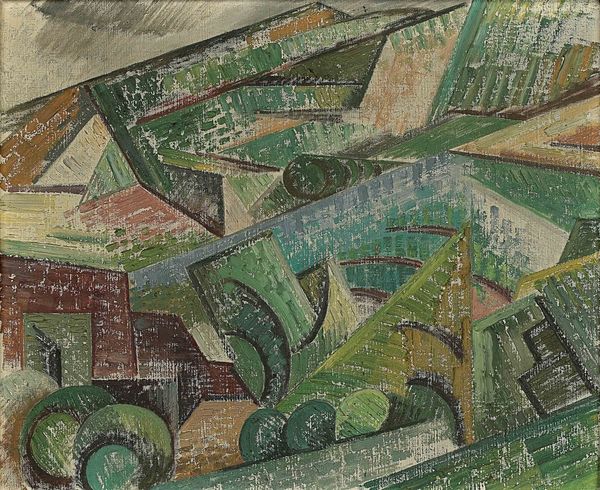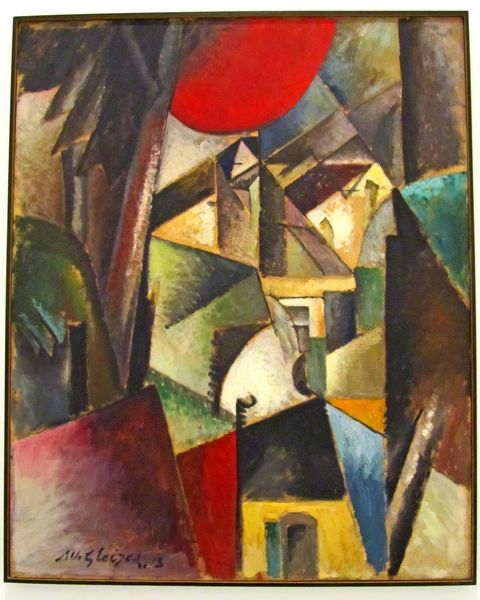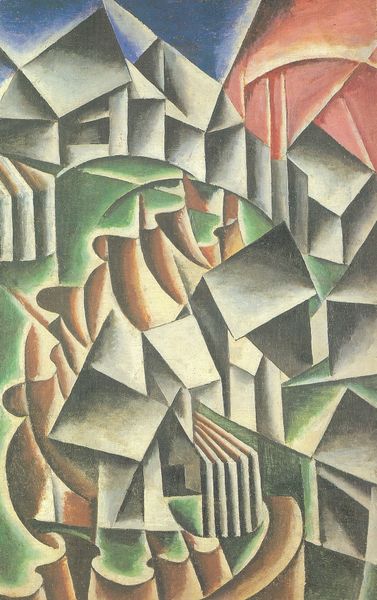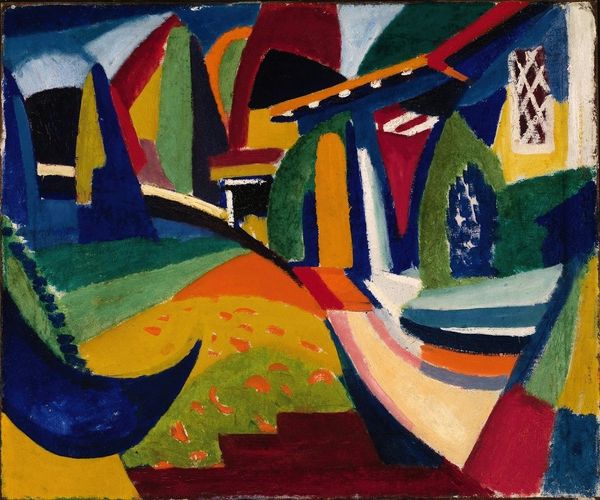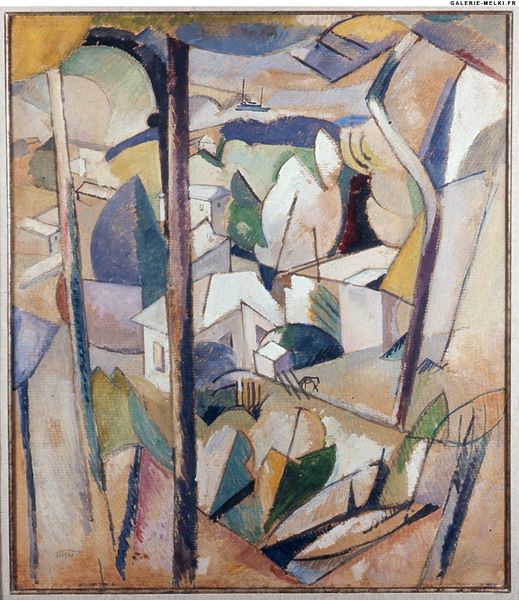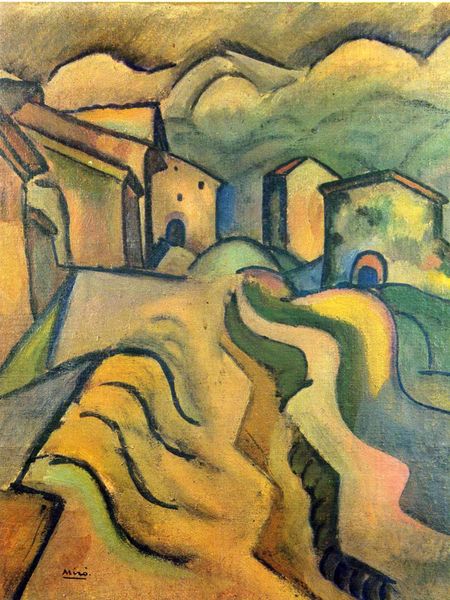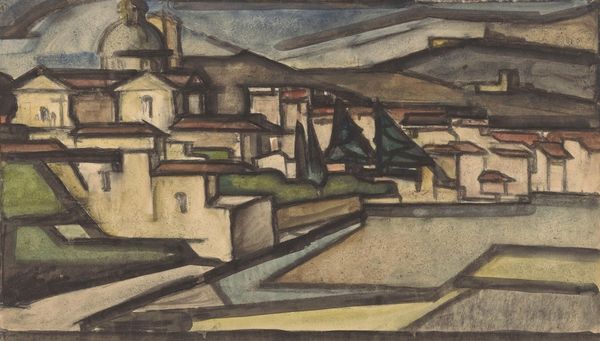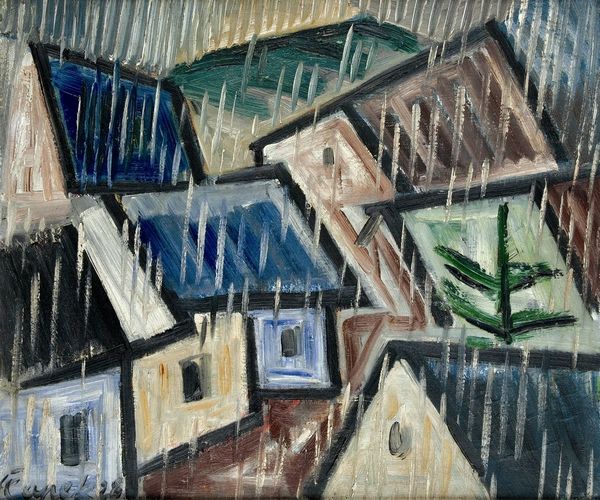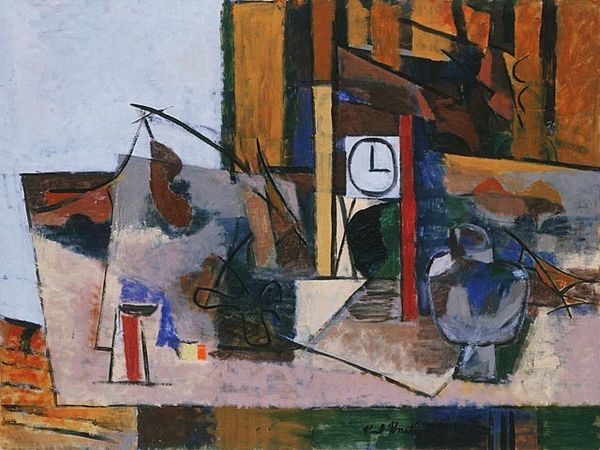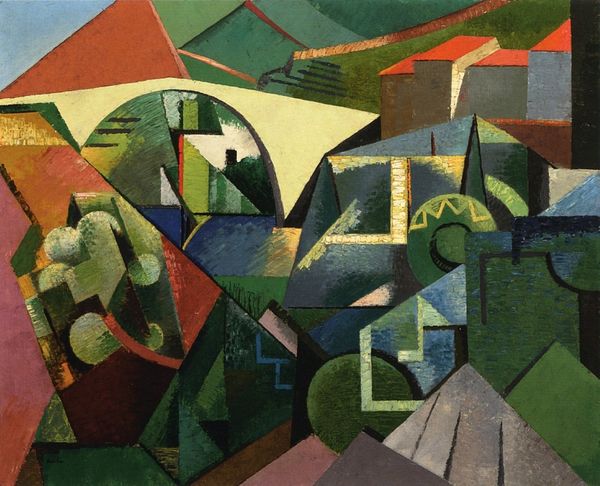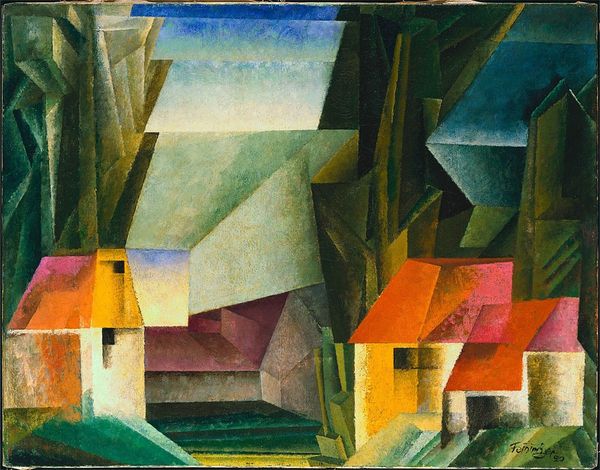
Copyright: Public domain US
Curator: Auguste Herbin painted "Paysage à Céret" in 1913, offering a glimpse into his Cubist interpretation of landscape. Editor: My immediate response is that of a somewhat anxious formalism. It’s as if the landscape is caught between the desire to cohere, and an implosion to planar forms. There’s an unsettling tension created by the angular forms and subdued palette. Curator: It is important to contextualize Herbin's evolution. "Paysage à Céret" was produced during a time of significant social and political upheaval, especially leading up to the First World War, with anxieties about nationhood and identity being extremely palpable throughout Europe. Cubism can be read, from that perspective, as mirroring the fragmentation of traditional social structures and modes of perception. The choice of representing the landscape – a traditional and conservative genre – but in a modern fragmented way seems deliberate, to question stable ground as it were. Editor: Precisely. The subverted forms push against conventional landscape art through geometry. Look at the arrangement of geometric shapes, especially how lines are converging and diverging; the use of overlapping planes and intersecting angles generates this effect of spatial ambiguity, challenging conventional perspective. This adds to that tension, but creates an optical challenge that activates my gaze. Curator: Absolutely. Further exploration reveals an artist grappling with societal change, and anxieties around rapid urbanization and changing rural life through this fracturing. In my view, Herbin hints at how traditional rural life—as epitomized by landscape painting—is being challenged and perhaps overshadowed by modernist trends. Editor: I concur, even the somewhat muted tones speak to that fractured sense you described. Curator: Well, reflecting on this work from different viewpoints shows that through historical and societal context or formal scrutiny, the canvas continues to deliver a new experience. Editor: Indeed, “Paysage à Céret" demonstrates the visual reward when one slows down to appreciate the interplay of form and history.
Comments
No comments
Be the first to comment and join the conversation on the ultimate creative platform.
